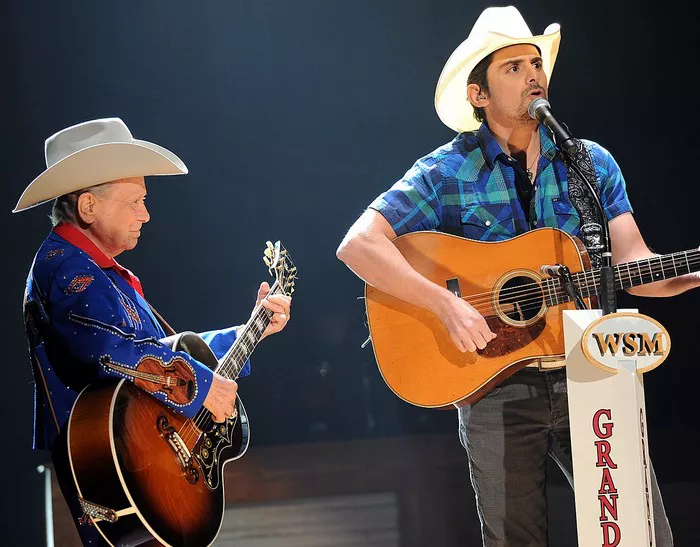Country music has undergone a significant transformation over the years, transitioning from its traditional roots to the modern sound we hear today. This evolution has been driven by various factors, including changes in societal norms, technological advancements, and the influence of other musical genres. While both traditional and modern country music share a common heritage, they differ in terms of musical style, lyrical content, instrumentation, and the overall cultural context. In this essay, we will explore the distinctive characteristics that set modern country apart from its traditional predecessor.
Traditional Country: A Glimpse into the Past
Traditional country music, often referred to as “classic” or “old-school” country, emerged during the early 20th century and found its roots in the rural folk traditions of the Southern United States. This genre was characterized by its simplistic melodies, heartfelt storytelling, and acoustic instrumentation. Themes often revolved around love, heartache, family, and the struggles of everyday life. Artists like Hank Williams, Patsy Cline, and Johnny Cash became icons of traditional country music, with their emotive vocals and relatable narratives resonating with audiences across generations. Traditional country’s instrumentation primarily featured acoustic guitars, fiddles, banjos, and simple percussion, creating an authentic and raw sound.
Modern Country: A Fusion of Styles
Modern country music, also known as “contemporary” country, emerged in the late 20th century and has since embraced a wide range of influences, including pop, rock, and even hip-hop. This evolution has led to a more diverse and experimental sound, characterized by polished production techniques, electronic elements, and a broader vocal range. Artists like Taylor Swift, Keith Urban, and Carrie Underwood have redefined the genre’s boundaries, incorporating modern production styles and catering to a broader audience. While the lyrical themes of modern country still touch on traditional topics, they often explore contemporary issues and lifestyles, reflecting the changing cultural landscape.
Musical Style and Production
One of the most notable differences between traditional and modern country lies in their musical styles and production techniques. Traditional country relied heavily on acoustic instruments and minimalistic arrangements, emphasizing the raw emotions conveyed through the lyrics. In contrast, modern country frequently features a more polished and layered production, incorporating elements from various genres. Electronic beats, synthesized sounds, and intricate vocal harmonies are common in modern country tracks, giving them a more expansive and commercially appealing sound. This shift in production reflects the influence of modern recording technologies and the industry’s demand for radio-friendly hits.
Lyrical Themes and Content
While both traditional and modern country address themes of love, heartbreak, and personal struggles, the lyrical content has evolved to reflect contemporary issues. Traditional country songs often told stories of rural life, family values, and simpler times. In contrast, modern country lyrics explore a broader range of subjects, including urban experiences, technology, and the complexities of modern relationships. The lyrics of modern country songs tend to be more direct and explicit, reflecting a cultural shift towards openness and candid expression.
Instrumentation and Arrangements
Instrumentation is another key distinction between traditional and modern country music. Traditional country relied on a core set of instruments like acoustic guitars, fiddles, and steel guitars, creating a distinctive twangy and rustic sound. These instruments were often played in a straightforward manner, focusing on melody and rhythm. In contrast, modern country incorporates a wider array of instruments, including electric guitars, synthesizers, and drum machines. This expanded instrumentation allows for greater experimentation with sound and genre blending, contributing to the genre’s dynamic evolution.
Cultural Context and Audience
The cultural context in which traditional and modern country music thrive has also shifted over time. Traditional country was deeply rooted in rural and working-class communities, serving as a reflection of their experiences and values. It was often seen as a way to preserve and celebrate the traditions of rural life. In contrast, modern country music has transcended geographical boundaries, appealing to a more diverse and global audience. Its fusion with other genres and incorporation of contemporary themes have broadened its appeal, making it a staple of mainstream popular music.
Conclusion
In conclusion, the evolution of country music from its traditional roots to the modern sound we hear today is a testament to the genre’s adaptability and resilience. While traditional country music was characterized by its simplicity, heartfelt storytelling, and rustic instrumentation, modern country has embraced a more diverse and experimental approach, incorporating influences from various musical genres. This transformation reflects changes in technology, societal values, and the music industry’s demands. While both styles of country music have their own unique charm, the contrast between traditional and modern country highlights the genre’s ability to evolve while maintaining a connection to its heritage.
FAQs:
1. Is modern country music completely different from traditional country music?
No, modern country music has evolved from traditional country and still retains some of its core elements, such as storytelling and themes of personal experiences. However, modern country has incorporated various musical styles and production techniques that distinguish it from its traditional counterpart.
2. What are the main influences that have shaped modern country music?
Modern country music has been influenced by a wide range of genres, including pop, rock, and hip-hop. These influences have contributed to the genre’s diverse sound and its appeal to a broader audience beyond traditional country fans.
3. How has the audience for country music changed over the years?
The audience for country music has become more diverse and global. While traditional country was closely tied to rural and working-class communities, modern country’s fusion with contemporary themes and genres has attracted listeners from various backgrounds and geographical locations.

